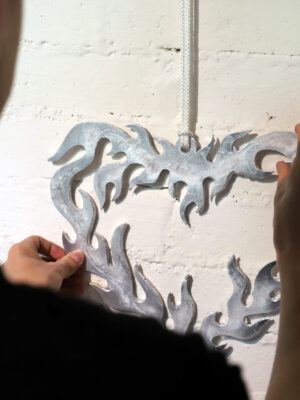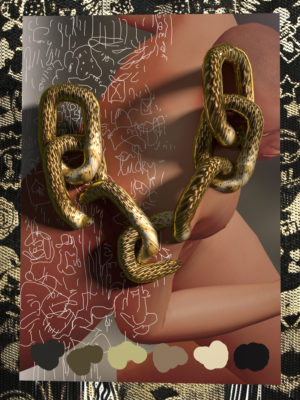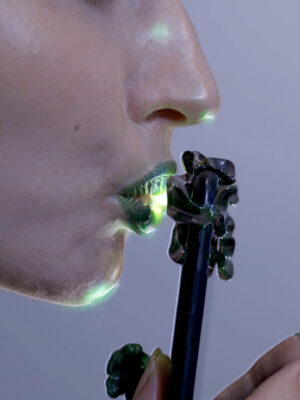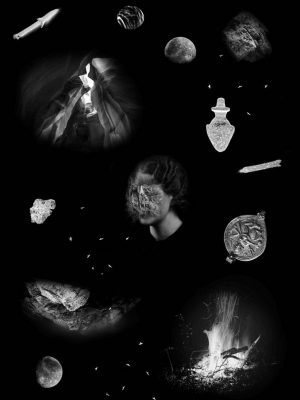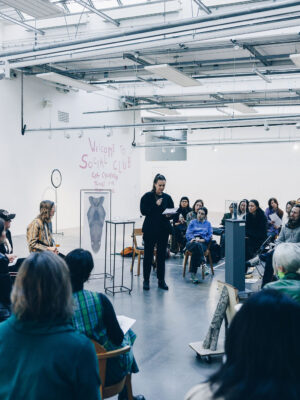Veronika Muráriková: How has the year been since you graduated from the HDK Academy of Design and Crafts?
Jussi Järvinen: My past year has gone fast, and it has included both ups and downs. Right after graduation, I moved back to Finland and set up a studio in Helsinki. I was lucky because I found a studio accidentally with help from my friend when I was still studying in Sweden. I share the studio with two other artists. However, it was quite hard to start almost from scratch in a new place.
VM: Where did you spend the quarantine?
JJ: I spent the quarantine mostly at my home. Because Helsinki was the epicenter of the coronavirus and the borders of that region were closed, I spent a lot of time working in my hometown in Central Finland, where there are fewer people.
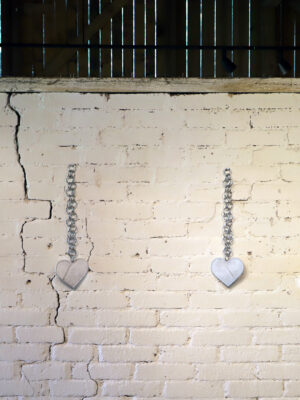
Chains create boundaries. They can restrict our bodies, but at the same time, a chain worn on the human body can symbolize connection and cohesion.
VM: What was the last project or exhibition you had been working on before the pandemic outbreak?
JJ: I had an exhibition called A Journey to the Heartlands 2020 coming in June, so I had to work as much as I could despite the measures. I was working mainly with sand casting that I could do in my hometown. The theme of the group exhibition was belonging and displacement. I explored the theme concerning my own experiences and power structures in society through jewellery, sculpture, and installation…
That’s why the element of chains is the major aspect of my work. Chains create boundaries. They can restrict our bodies, but at the same time, a chain worn on the human body can symbolize connection and cohesion. Even though they are not always material, they can still affect us. Some chains and boundaries are more discursive and symbolic, yet they can restrain the body movement we intent.

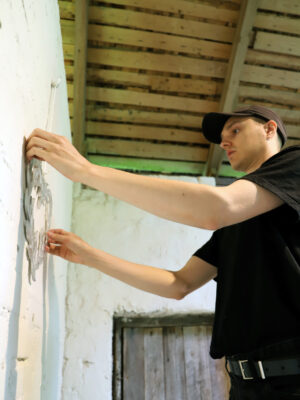
VM: How did you go about planning the exhibition while being in a quarantine? Which were the most difficult or challenging aspects to deal with?
JJ: It was quite challenging in general because we were not sure if the exhibition will even take place and if it’s responsible to invite people to visit the show. I would say that these were the most difficult aspects to consider. I was also worried if I get everything finished on time because it felt like everything was taking much longer than usual – communication, material orders, etc. In the end, the public opening had to be cancelled, but actually, it was quite refreshing to leave only the work to communicate with the audience.

VM: How has the pandemic influenced your making?
JJ: Everything felt uncertain during the isolation… For a long time, it wasn’t clear if it’s even possible to organise an exhibition, but still, I had to spend money on making new works. Before, I used to work in libraries, laser cut in a public workshop, and share my studio space with other artists. However, coronavirus kept me at home, since all the libraries, for example, were closed. Currently, I’m thinking of my next exhibition in September, but before that, I will take a small break from producing new works.
…many artists have struggled with their economic situation during the corona pandemic, and it has shown, at the latest, how fragile is the economic situation that many artists are in.

VM: People across the globe are now talking about a new starting point and reassessing our strategies and values. Saying that, to what kind of environment would you like to return to?
JJ: I hope there are many new ways to work as an artist after the corona crisis is over. For instance, will online exhibitions become a common way of presenting work alongside physical shows? I see a lot of potential in exhibiting online. Digital exhibitions may reach a new kind of audience and, for example, we wouldn’t need to fly to another country to see the show. I think these kinds of actions would be necessary during this time of climate catastrophe.
Also, many artists have struggled with their economic situation during the corona pandemic, and it has shown, at the latest, how fragile is the economic situation that many artists are in. Hopefully, politicians and the government will understand this, and it will show in funding in the future.
VM: What have you learned about yourself and your practice during these times?
JJ: What I have noticed is that I’m quite flexible when it comes to physical working conditions. Of course, I can’t make certain kinds of things and use some techniques from home, but I have always found ways to continue working during the pandemic.
See more work by Jussi Järvinen here
